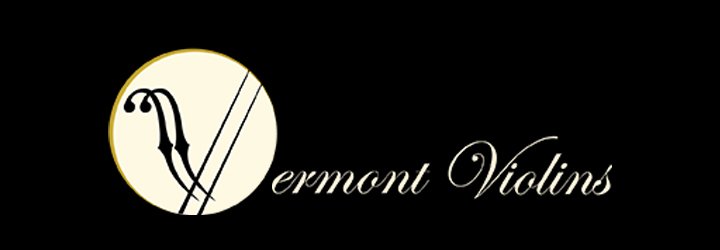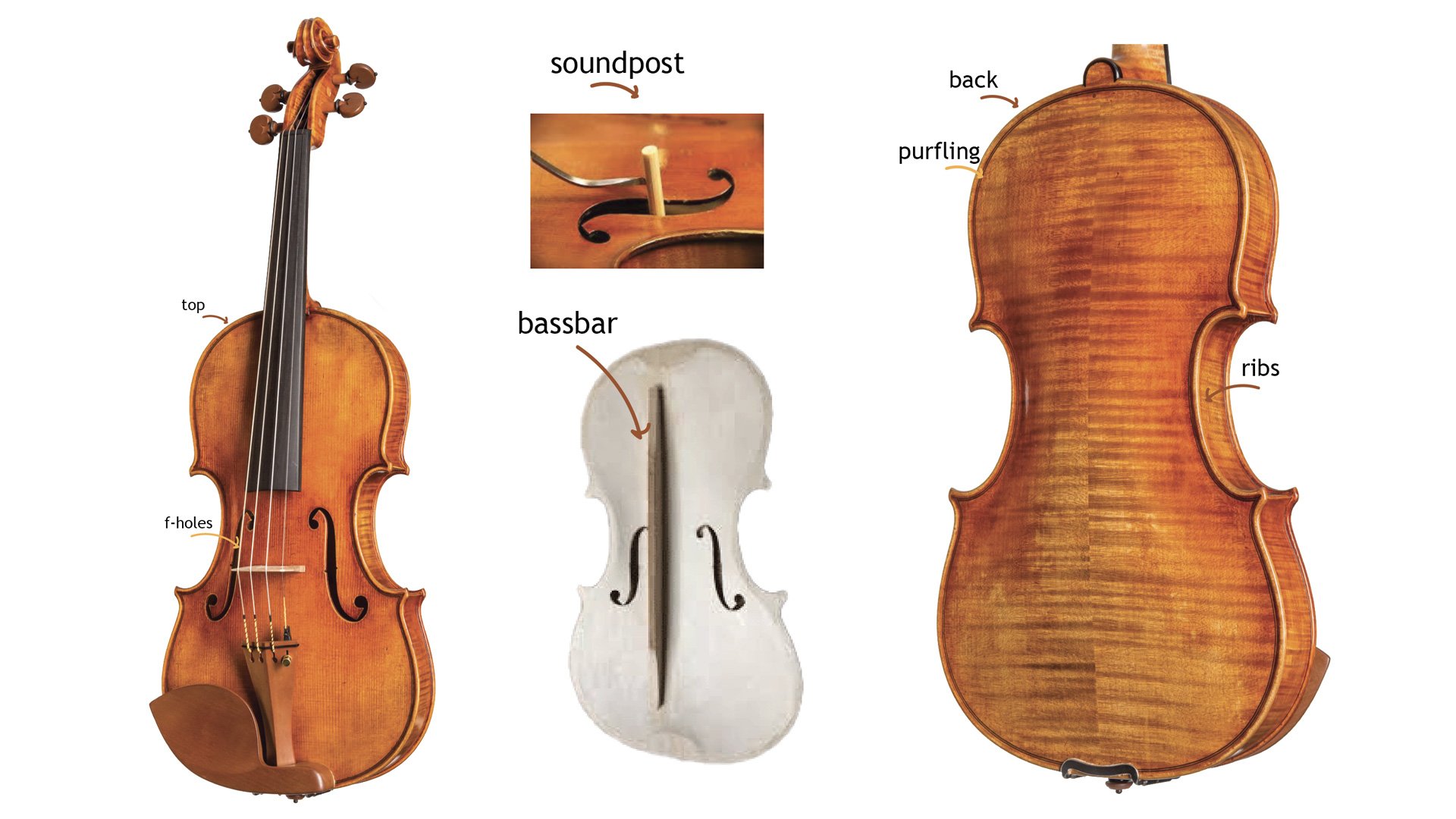The Anatomy of a Violin
PARTS & MECHANISM
The violin, while seemingly simple, is a complex and beautifully crafted instrument. Understanding the anatomy of a violin can deepen your appreciation for this intricate instrument and enhance your playing experience.
THE BODY:
Top (Belly): Made of a softer wood, usually spruce, the topplate defines the quality of the instrument’s tone. The overall outline, the slopes and curves, the carved thicknesses (“graduations”) all contribute to creating the maker’s intended sound.
Back: Made of a harder wood, usually maple, the backplate both shapes the tone and projects the sound outwards towards the audience. An instrument’s overall volume and quality of tone is affected by the wood selection, the carved thicknesses (“graduations”), slopes and curves and overall outline.
Purfling: This two-lined inlay serves multiple purposes. Visually, the lines outline the instrument, defining the shape of the instruments visually. Structurally, the purfling helps prevent cracks from developing, especially in the endgrain areas at the top and bottom of the instrument.
Ribs: These thin strips of wood connect the top and back, forming the sides of the instrument.
Soundpost: A small dowel inside the instrument, carefully and precisely carved and set, transmits the vibrations of the string, bridge and top plate to the backplate. It also supports the Top Plate. The region carved around the Soundpost is the most critical region of the plate for sound generation. Where the soundpost is set, slightly back from the treble bridge foot, affects the instruments tone dramatically and the tone-balance of the four strings.
Bass Bar: A long bar glued and suspended laterally along the length of the Top Plate, near the bass side F-Hole. The bassbar prevents the top from collapsing and supports the bass register of the instruments tone.
F-holes: These visually stunning carved holes of the instrument add speaker-level release of sound to the outside of the instrument. They also provide access to the soundpost for adjustment when needed. The small horizontal “f” marks in the center theoretically point to the bridge feet location. Placement, shape and size of the f-holes contribute to the volume and quality of the instrument’s tone.
NECK & FINGERBOARD:
Neck: Usually made of maple, the neck supports the fingerboard and connects to the body.
Fingerboard: A smooth, dark wood (typically ebony) glued to the neck, where the fingers press down on the strings to change pitch.
HARDWARE:
Scroll: Drawing on design concepts of the Rococo era of the 18th Century, the Scroll borrows the shell pattern that incorporates the Golden Ratio. It’s a perfect shape, carved in balance on left and right.
Pegbox: Houses the tuning pegs.
Tuning Pegs: Used to tune the strings.
Nut: Small piece that elevates the strings over the fingerboard.
Button: Half-moon piece of wood at top of back plate. This creates the connection of the neck to the body of the instrument: small but critical to the instrument support and structure.
Saddle: Small piece of hard wood at back of instrument to protect the Top Plate as the tailpiece wire or gut rides over to connect with the endbutton.
Bridge: Made of a hard wood, Maple, the bridge does far more than just suspend the strings over the fingerboard. The thickness and carving is critical to fine-tuning the tone of an instrument and can fundamentally change an instrument’s tone.
Tailpiece: Triangular wood piece to anchor the strings at the lower end. Precise length is important to create a proper string length behind the bridge to add desired harmonics to the instrument’s tone.
Chinrest: Available in a myriad of shapes and sizes to aid in the comfort of play. Every body shape and playing style determines the best chinrest shape for any individual player.
Endpin: A retractable metal rod that helps support the violin against the player's shoulder.
STRINGS:
There are a myriad of materials used in the construction of violin family strings ranging from animal gut, to steel, to all manner of synthetic and heavy metal wire. Strings are carefully calibrated to create the correct tone and string selection is an important way for a player to get the desired sound of their instrument.
BOW:
Stick: Typically made of Pernambuco wood, the stick is long and tapered.
Hair: Horsehair is stretched along the stick, used to draw sound from the strings.
Frog: The handle of the bow, where the player grips it.




